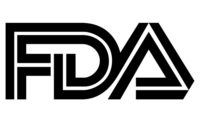Questionable nutrition-related claims and symbols on the front of a package or on shelf labeling may not be a “smart” choice anymore.
Nutrition-related claims and symbols on the front of a package or on point-of-purchase materials may not be a “smart” choice, especially if they are misleading, inaccurate, unsubstantiated or inconsistent with government guidelines.
That’s because companies that continue to make such claims will be subject to enforcement actions by the Food & Drug Administration, according to a recent letter to the industry by Barbara O. Schneeman, director of the Office of Nutrition, Labeling and Dietary Supplements in the FDA’s Center for Food Safety and Applied Nutrition.
Specifically, the FDA is looking at nutrient-specific claims or symbols that provide quantitative, evaluative or both kinds of information on selected nutrients in a product without comparing the product's overall nutritional quality to that of its counterparts.
For example, the government may target snack and bakery producers that claim on the front of packages (FOP) or in their products containing no trans-fats while having a high saturated fat content. Likewise, packages or materials that indicate a product is a “smart” or “recommended” choice because it contains whole grains or a good source of fiber but is high in fat or sugar could be running afoul with government regulators who are planning to crack down on misleading logos, graphics and other ways that emphasize a product’s nutritional quality.
“FOP or shelf labeling that provides consumers with readily accessible information about a product's nutritional profile, in a manner that is consistent with and linked to the required Nutrition Facts panel, responds to today's marketplace realities and can be part of the education and outreach consumers need to understand and act on nutrition information at the point of purchase,” Schneeman wrote. “However, FDA's research has found that with FOP labeling, people are less likely to check the Nutrition Facts label on the information panel of foods… It is thus essential that both the criteria and symbols used in front-of-package and shelf-labeling systems be nutritionally sound, well-designed to help consumers make informed and healthy food choices, and not be false or misleading.”
She added that FDA now is analyzing FOP labels that may be misleading. The agency also is targeting those symbols that either expressly or by implication are nutrient content claims, then assessing the criteria established by food manufacturers for such symbols and comparing them to the agency’s regulatory criteria.
“It is important to note that nutrition-related FOP and shelf labeling, while currently voluntary, is subject to the provisions of the Federal Food, Drug and Cosmetic Act that prohibit false or misleading claims and restrict nutrient content claims to those defined in FDA regulations,” Schneeman added. “Therefore, FOP and shelf labeling that is used in a manner that is false or misleading misbrands the products it accompanies.”
FDA is developing a proposed regulation that would define the nutritional criteria that would have to be met by manufacturers making broad FOP or shelf-label claims concerning the nutritional quality of a food, whether the claim is made in text or in symbols. FDA's intent is to provide standardized, science-based criteria on which FOP nutrition labeling must be based.
Related Articles
Related Products
See More ProductsSee More ProductsEvents
View AllSubmit An Event-
June 9, 2009 Food Plant of the Future: Using Design to Increase Productivity and Drive Down Unit Costs
×
Get our new eMagazine delivered to your inbox every month.
Stay in the know on the latest snack and bakery industry trends.
SUBSCRIBE TODAY!Copyright ©2024. All Rights Reserved BNP Media.
Design, CMS, Hosting & Web Development :: ePublishing




